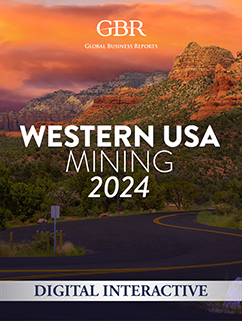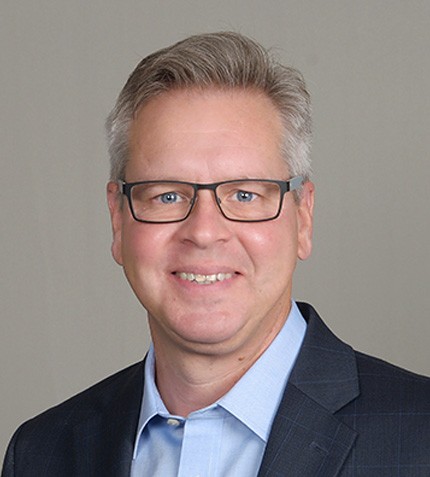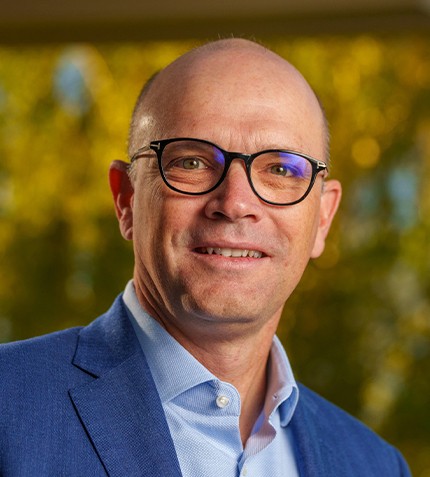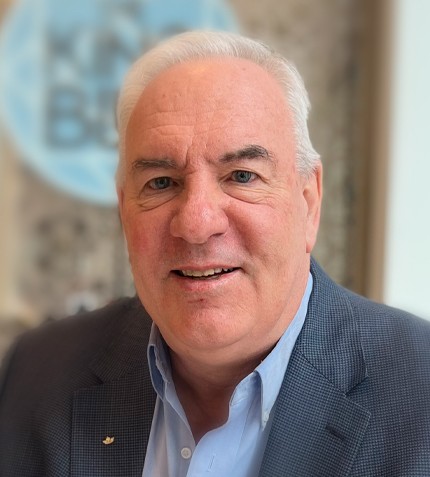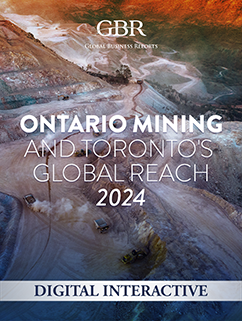Western USA Copper Production and Development: The imperative for new projects to satisfy domestic demand
RELATED PUBLICATION
ARTICLES FROM THIS PUBLICATION
Western USA Copper Production and Development
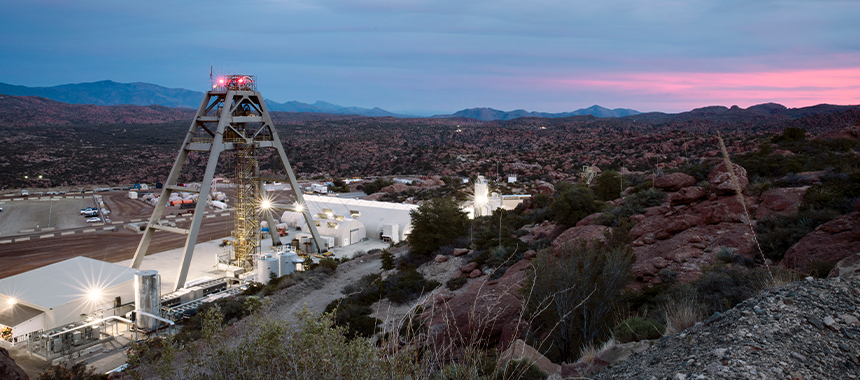
Image courtesy of Resolution Copper
In 2022, copper production in the US was estimated at 1.3 million tons (t), an increase of 6% compared to 2021. Arizona, the copper state, where major copper mines belong to big players such as Freeport-McMoRan, Asarco, Carlota Copper (a subsidiary of KGHM International), Taseko Mines' Florence Copper asset, and Excelsior Mining, maintained its position as the leading copper-producing state, accounting for approximately 70% of domestic output (copper was also mined in other Western States like Nevada, New Mexico and Utah).
The most significant increase in 2022 in copper production was due to Rio Tinto's Bingham Canyon mine in Utah —more commonly known as Kennecott, but 2022 also saw a significant rise in copper production thanks to Freeport-McMoRan's Morenci and Safford mines in Arizona, which offset Asarco's decline. However, during the first half of 2023, most US copper mines have declined in production compared to the first half of 2022. According to USGS's figures, Freeport produced 7% less than during the same period in 2022 (362,000 t of copper vs. 391,000 t), mainly due to unplanned maintenance and lower ore grades and mining rates.
KGHM's Robinson Mine in Nevada also decreased its production by 66% because of lower-grade copper ores from inventories and the transition zone of the mine deposit. Rio Tinto's Kennecott produced 55,100 t of copper in concentrates during the first six months of 2023, 25,900 t (32%) less than 811,000 t in the first six months of 2022, mainly due to record snowfall in the first quarter and a conveyor belt motor failure at the concentration plant in March. What is interesting about this first half of 2023 compared to the first half of 2022 is that these decreases were partially offset by higher production at Asarco's mines in Arizona, where total copper output increased by 5% from that in the first half of 2022 (60,900 t).
According to a report by McKinsey & Company, the demand for copper is expected to reach 36.6 million t/y by 2031 due to electrification. However, current supply projections offer only 30.1 million t/y, leaving a significant gap. In response to this challenge, many copper-producing companies are developing new techniques and implementing innovative technologies to ramp up operations by producing from brownfield settings, tailings ponds, or stockpiles. One example is Freeport-McMoRan. Freeport's president and COO for the Americas, Joshua Olmsted, unveiled that the Phoenix-headquartered company had adopted a 'leach to the last drop' approach, looking for incremental copper growth through the solvent extraction, electrowinning, and leaching processes: "This initiative is about leveraging our resources in stockpiles. With innovative leaching technologies, we can tap into 38 billion pounds (lb) of copper contained in our stockpiles that were previously deemed unrecoverable and now produce incremental copper with the benefits of not having to mine," said Olmsted.
According to Olmsted, in the US Freeport is targeting production of 200 million lb/y of copper for 2023 with the 'leach to the last drop' approach and then driving that growth up to 800 million lb/y.
In the meantime, the company continues to spend significantly in the Safford district around the Lone Star project to understand the resource. "Several years ago, we decided to go after incremental copper at Safford via the Lonestar oxide project to take the production capacity up to approximately 300 million lb/y. We are well on our way to that, and in the longer term, as we develop and invest in exploration, we are developing a model to help us define the potential for a much broader footprint at Safford," explained Olmsted.
Another major player in Arizona is Asarco, part of Grupo Mexico, which possesses the Ray, the Mission Complex, and Silver Bell mines in the copper state. The largest operation is Ray, which consists of an open-pit mine with a concentrator and a solvent extraction-electrowinning (SX/EW) operation that generates copper concentrates, followed by the Mission Complex, which also has its concentration plant. According to Grupo Mexico's fourth quarter and annual results published in February 2023, Asarco's Arizona production totaled 112,232 t/y of copper in 2022, an 11.4% decrease compared to 2021. It is imperative that major copper producers like Freeport and Asarco ramp up operations to meet the previously mentioned decarbonization goals; however, this is not an easy task. Copper producers face not only permitting obstacles and rising costs due to inflation but also labor shortages. Asarco, in particular, has experienced the impact of a shrinking workforce in its operations. "We confront a scarcity of personnel, resulting in operations functioning below our desired capacity. Nevertheless, we are adeptly adjusting to the projected pace and have successfully met our financial targets for 2022 and the initial half of 2023," said Óscar González Rocha, Asarco's CEO.
Besides the mines in Arizona, Asarco owns the Hayden smelter and the Amarillo copper refinery in Texas. Because both assets had been operating at a low rate, Asarco decided to suspend the Amarillo refinery. At the same time, the Hayden smelter recently started processing slag in 2023 to recover the remaining copper from the company's operations: "We are primarily selling the concentrates we send to the northern border of Mexico, specifically the port of Guaymas, where they are shipped to Asia and, to a lesser extent, Europe," added Rocha.
According to several media outlets, at the end of October 2022, Asarco was in talks with Freeport-McMoRan for a potential smelter sale. However, it seems that no agreement was forthcoming. When asked about Asarco's goals for the upcoming years, González responded that they have a long-term work horizon by sustaining Asarco's operations for another 10 to 15 years by leveraging existing reserves: "We aim to restore operations at the Hayden smelter and the Amarillo refinery to produce copper cathodes and rod, which are primarily sold in the eastern region of the US."
Near Freeport's operations in Arizona's Globe-Miami district, we find Capstone Copper's Pinto Valley Mine. This copper-molybdenum mine yielded a copper production of 57,000 t in 2022, and has a mine plan that extends through to 2039, with mineral resources exceeding 1.3 billion t. According to Lyndsay Potts, the general manager of Pinto Valley, exploration has not been a primary focus for the company due to the substantial resource endowment. Instead, they have alternative plans to enhance production. This includes evaluating sulfide leaching to unlock value from their underutilized SX-EW plant and, like Freeport, recover copper from waste via sulfide leaching technologies. One particularly interesting aspect highlighted by Potts is Pinto Valley's commitment to maintaining an open dialogue with its neighbors in the Globe-Miami district, including Freeport and BHP. "We believe that by working together, we can expand production over the medium-term while also lowering costs and bringing significant benefits to many stakeholders in the district," she concluded.
Recognizing that each company has unique objectives regarding profitability and corporate strategies, Potts' statements make one wonder about the potential implications for Arizona and, more broadly, the US if the Globe-Miami district were to undergo consolidation. While conversations about hub-and-spoke models have mainly centered around junior companies, it would be interesting to delve into the advantages of a semi-integration without a merger. The potential benefits and synergies are clear: combining financial resources for exploration, sharing infrastructure, knowledge, and deposits. This collaborative approach could boost US production and align with Washington's objectives.
Copper development
With the scarcity of new copper projects coming online to meet the looming deficit, companies are making strides to advance their existing projects. Arizona Sonoran Copper (ASCU), an emerging SX/ EW and heap leach copper developer on private land, is focusing on developing its brownfield Cactus project, including the new Parks/Salyer deposit. The Toronto-headquarter company is working on the forthcoming PFS for the first quarter of 2024. According to George Ogilvie, president and CEO of ASCU: "The upcoming PFS promises to be transformational for Arizona Sonora. In contrast to the 2021 PEA, which excluded Parks/Salyer, this PFS will integrate the deposits and target a 45,000-50,000 t/y heap-leach and SX/EW processing to produce copper cathodes over a mine life of 25-30 years."
In September 2022, ASCU released the maiden mineral resource estimate on Parks/Salyer that boasts a 2.9 billion lb resource with a grade exceeding 1% of total copper. Since then, it has completed a 105,000 feet infill drilling program targeting the indicated category, completed in March 2023 with all assays confirming robust thickness and aligning with the inferred mineral resources announced in 2022.
Copper producers and developers not only play a pivotal role by supplying the red metal but also bear the responsibility of sticking to the highest socio-environmental standards. This responsibility ensures that the increasing demand for copper does not result in the environmental damage that it is supposed to reduce. Thus, technology is leveraged to enhance production and make it more sustainable and environmentally friendly. In this context, ASCU, like many other copper projects worldwide, collaborates with Nuton, a Rio Tinto company, to research copper recovery from primary sulfides. The goal is to reduce water consumption and lower GHG relative to traditional milling, while ultimately opening the door for an additional 1.7 billion lb of copper.
Another company with quite advanced-stage projects and close ties with Nuton is Excelsior Mining, which, in February 2023, announced an updated PEA on Johnson Camp mine (JCM), incorporating sulfide leaching technology. Nuton's technology would enable Excelsior to access the previously unmined 1% sulfide copper at the bottom of the JCM open pit, which saw its last mining activity in 2010, when the high-grade oxide was depleted. "If all the test work proves favorable for our commercial mine design, we aim to break ground at JCM sometime in H1 of 2024," explained Stephen Twyerould, president and CEO of Excelsior Mining. "At the end of the three to five-year trial, Nuton can exercise an option to establish a joint venture for the remaining 15 years of the mine's life,” continued Twyerould.
Excelsior’s other project, the Gunnison Copper project, Twyerould describes as "distinctive" due to its in situ recovery method, a mining extraction process widely used for uranium, but gaining momentum for its reduced environmental footprint: "The process eliminates traditional mining activities, resulting in no excavation, tailings, and minimal waste. It significantly reduces water consumption and greenhouse gas emissions, making it an environmentally unparalleled approach in the mining industry," commented Twyerould.
Excelsior developed a well-stimulation approach akin to hydraulic fracking, to increase permeability and flow rates in rock formations. "We successfully amended our EPA operating permit in 2023 to allow for well stimulation and plan to conduct field trials in H1 2024. If the trials prove successful, we plan to optimize and integrate this approach into our commercial production plan, ultimately getting back into production and regaining the value of our Gunnison Copper project," concluded Twyerould.
Locating high-quality copper deposits is becoming more complex. Mature jurisdictions have already been exploited, deposits are found in more remote and economically challenging areas, or ore grades are declining. According to Victoria Peacey, president and general manager of the Resolution copper project, a joint venture between Rio Tinto and BHP, US mines are often a century old with low and declining copper grades: "New supply is needed to replace lost and declining production and meet current and future domestic demand. Copper deposits such as Resolution are rare and exceptional."
Located in the Copper Triangle, the Resolution Copper project has a projected LOM of 60 years. It could generate approximately 3,700 direct and indirect jobs, not to mention the potential to fulfill up to 25% of the current US copper demand. The JV between Rio Tinto and BHP has faced opposition from several Native American groups and a delay in the Final Environmental and Social Impact Statement (FEIS) by the USFS. It continues to engage with several neighboring local communities and 11 Native American tribes, as well as numerous federal and state agencies: "The collective voice of communities, Tribes and regulators have driven major changes to the original mine plan, including the relocation of major project facilities and foregoing mining some sections of the ore body to avoid hundreds of areas of traditional importance, ancestral sites, seeps, springs and medicinal plants," explained Peacey.
Resolution has recognized the current labor shortage and understands that, given the 60 LOM for the project, it is imperative to start developing a skilled local workforce. It has invested in K-12 education, technical colleges, and apprentice programs to achieve this. Moreover, this should benefit local communities: "We want our employees to be able to live and thrive in the local communities they were born and raised in," commented Peacey.
One of society's concerns about the project is the mining method selected: block-caving. Resolution Copper's deposits boast around 1.5. billion t, containing copper at about 1.5%, and the depth reaches 7,000 feet below ground level. According to Peacey, the deposit's characteristics dictate the mining method, and block-caving has been successfully utilized, serving as the initial mining technique employed in the Copper Triangle and worldwide. Moreover, it would have several benefits: "Firstly, being underground eliminates the need for a large open pit and no permanent waste rock dumps, resulting in a significantly less disturbed footprint," said Peacy.




